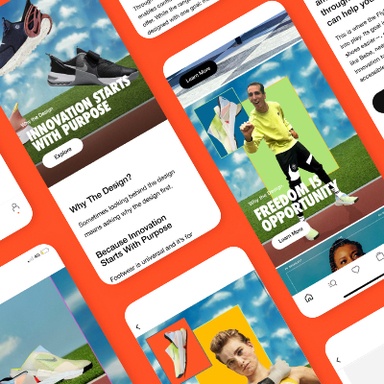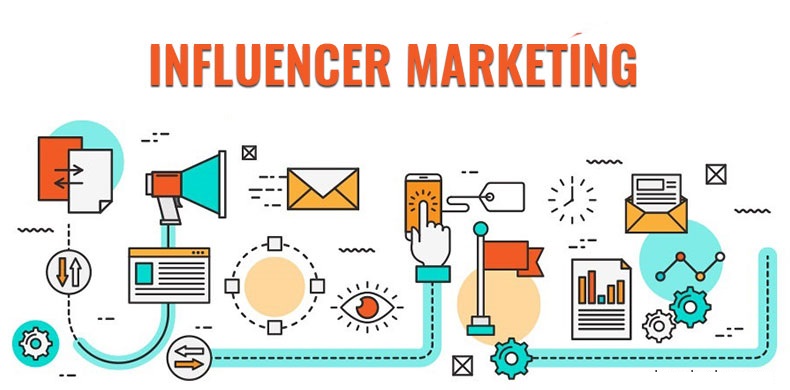
Burkett Outdoor Advertising is a marketing and advertising company that has been in business for over 30 years. It is headquartered near Amarillo in Texas and serves San Antonio (TX) and Austin (TX). The company is owned by Randy Burkett and his son Beau.
Bill Salter Outdoor Advertising
A local business owner filed last month a complaint alleging two Burkett Outdoor Advertising digital banners in downtown San Antonio broke state ethics laws. Jim Persons who supports the downtown stadium project filed the complaint.

The business owner claims that the signs were in violation of state law because they do not include a TEC right-of-way notice and did not disclose information on the ads about the fact that Tim Benson purchased the ad space. The business owner also says that the ads do not clearly state that they are paid for by the campaign.
TEC Rejects Complaint by Businessowner
Persons filed a complaint against TEC on October 12. The commission said in a statement that the complaint was based on technical errors.
In its rejection letter, TEC cited "simple error" in the advertising information. It stated that the information on the ads stating Benson purchased the ad spaces was impossible to read, and that it did not include a TEC Right-of-Way statement as required by law.
The question of whether these errors were serious or not is still open for discussion. The TEC did not respond to inquiries from reporters Wednesday.

Unconstitutional is the City's Sign Ordinance
The fundamental legal issue in this case revolves around the constitutionality or City ordinance that requires Salter obtain permits to put up advertising signs outside of his home. Specifically, Salter challenges the City's municipal code (the "Ordinance") that governs the location, size, setback, height, frequency, and other standards for outdoor advertising signs. The court must determine whether the Ordinance as it stands and how it was applied. The court will need to consider evidence that the Ordinance favors commercial advertisements over those not.
FAQ
What do you need information about print advertising
Print advertising is an effective medium for communicating with consumers. Many companies use print advertising to promote their products. It is designed to attract the attention of the customer.
Print ads are usually one-page long. They contain text, images, logos, and any other graphics. They can also include sound and animation as well video and hyperlinks.
The following are the main types print advertisements:
1. Brochures are large-format printed materials that are designed to draw people into shops. They often have colorful pictures and eye-catching designs.
2. Catalogues: These are smaller versions or brochures. They are typically sent to customers who have requested information on specific items.
3. Flyers - These small pieces of paper are distributed at events like fairs and concerts. If they are given out at retail outlets, they can be obtained for free, but you must pay for them.
4. Posters – These are larger versions for flyers. They are often displayed on walls, fences, or buildings. They are created by computer software programs in order to grab passersby's eyes.
5. Direct mail – These are direct mail letters and postcards sent to potential customers. These are sent to customers periodically by businesses to remind them about their business.
6. Newspaper Ads - These are placed in newspapers and magazines. These are typically quite long and often contain text as well images.
How much does it take to advertise on social networks?
It is important to know that advertising on social media platforms is not free if you decide to do this route. You will be charged monthly depending on your time on each platform.
Facebook - $0.10 Per 1,000 Impressions
Twitter - $0.20/1000 impressions (if applicable)
Linkedin - $0.30 for 1,000 impressions if your send out invitations
Instagram - $0.50/1000 impressions
Snapchat - $0.60 per 1,000 impressions ($0.40 per user)
YouTube - $0.25 Per 1,000 Views
Tumblr – $0.15 per 1000 impressions for text postings
Pinterest - $0.05 per 1,000 impressions per month
Google+ - $0.15 to $0.0.20 per 1,000,000 impressions
Tumblr - $0.15- $0.20 per 100,000 impressions
Vimeo – $0.20- $0.25 Per 10,000 Impressions
Soundcloud – $0.20-$0.25 for 1 million plays
StumbleUpon - $0.20 -$0.25 per 1 billion pageviews
Digg: $0.20 – $0.25 per 1,000 diggs
Reddit - $0.20-$0.25 per 1000 comments
Wordpress - $0.20 to-$0.25 for 500 comments
Flickr - $0.20 -- $0.25 per 5,000 photo uploads
What do you need to know about internet advertising?
Internet advertising is an important part of any business strategy today. It helps companies reach potential customers at a low cost. However, there are many different types of internet advertising available. Some advertising is free and others are paid.
There are also several ways to advertise on the internet, including banner ads, pop-up ads, search engine optimization (SEO), pay-per-click (PPC) advertisements, social media marketing, e-mail marketing, and mobile marketing. Each method has its benefits and drawbacks.
What is affiliate market?
Affiliate marketing is an online model that allows you to earn commissions for referring customers to other websites. The product owner pays you for each person who buys from you.
Referrals are the basis of affiliate marketing. Referring people to your website is all that's required. Refer them to the website.
You don't have to sell anything. It's as simple to sell as to buy.
It takes just minutes to set up an account as an affiliate.
Referring more people will result in more commission.
There are two types.
-
Affiliates who are the owners of their own websites
-
Affiliates who work for companies that offer products and services.
What is branding?
Branding is a way to communicate who and what you are. It's how you make people remember you when they hear your name.
Branding is all about creating an identity that makes your company memorable. A brand is more than just a logo. It includes everything from your physical appearance and the voice of employees.
Because customers know exactly what they are getting, strong brands help them feel confident in purchasing from you. They also feel more confident choosing your products than those from competitors.
Apple is a prime example of a company with a strong brand. Its brand is known worldwide for its sleek design, high-quality products, and customer support.
Apple's brand is synonymous with technology. Apple is the brand people think of whenever they see a smartphone or computer.
Before you launch a new business, it is worth creating a brand. This will give you and your business a face.
What are the basics of television advertising?
Television advertising is a powerful medium to reach many people at one time. It was also very costly. However, it can be powerful if you use the device correctly.
Although there are many kinds of TV ads to choose from, all share the same characteristics. When planning any TV ad, the first thing you should do is ensure that it fits within its category. It is not a good idea to try and run a lifestyle TV commercial while running a product or service commercial. Your message should be consistent throughout the entire campaign.
Second, prime-time hours are the best times to air your ads. This is because viewers tend to watch TV while sitting down in front the television. You want them to be comfortable enough to listen to your words.
Don't assume that just because you have lots of money, you will achieve great results. The opposite may actually be true. A study conducted by the University of California found that commercials aired during popular shows were less likely to sell products than those aired during unpopular shows. If you spend a lot of money advertising on TV, make sure it's done right.
What is an advertising buyer?
Advertisers buy advertising space on television, radio, and print media.
An advertiser pays for the time they want their message to appear.
They don't necessarily want the best ad, but they are more interested in what is most effective at reaching their target audience.
An advertiser might have details about potential customers, including their age, gender and income.
This information can be used by advertisers to decide which media works best for them. For example, they might decide that direct mail would be more effective with older audiences.
Advertisers also look at the competition. If there are similar businesses nearby, they might choose to place their ads near those competitors.
In addition, advertisers consider the size of their budget and the amount of time they have to spend their money before it expires.
Statistics
- In 1919 it was 2.5 percent of gross domestic product (GDP) in the US, and it averaged 2.2 percent of GDP between then and at least 2007, though it may have declined dramatically since the Great Recession. (en.wikipedia.org)
- It's 100% reliant on your website traffic. (quicksprout.com)
- Worldwide spending on advertising in 2015 amounted to an estimated US$529.43 billion. (en.wikipedia.org)
- Google will display whichever ad type (CPM or CPC) is expected to earn more revenue for the publisher, which is in Google's best interest since they take a 32% share of the revenue. (quicksprout.com)
External Links
How To
How to place sponsored ads on Facebook
Facebook is now one of the most used social networking sites. Globally, there are 1.79 Billion active monthly users. This number continues to grow every day.
Facebook is free, but you have to pay if you want to reach your audience directly. You can use paid advertising options such as banners, promoted posts, etc.
Log into the existing app if you already have it registered. You can also click on "Create New App". These are the steps to follow:
-
Click "Add Platform", under the Apps section.
-
Select "Advertising," then click Continue.
-
Please complete the form and submit it.
-
After approval, you will be issued a Client ID as well as a Secret Key. These keys and Client IDs should be copied.
-
and paste the keys into the appropriate fields.
-
Select the currency and enter the name of the campaign.
-
Click "Start Campaign"
-
Follow the instructions until your first banner appears. Copy the URL, then go back to your Facebook profile.
-
Paste the code into the box provided by Facebook.
-
Click "Save Changes".
-
Your ad is now live!
-
For each additional banner that you wish to make, repeat steps 10-12.
-
Click "Continue" when you're done.
-
Finish the last step to create your ad-group.
-
After you are done, click "View All Ads" and see all your campaigns.
-
Click the "Remove Advertisements" button next to any ad.
-
If you don't see any results after running your campaign you should double-check that you followed the instructions correctly.
-
Check the date range you have chosen for your campaign.
-
Set your budget accordingly.
-
Keep your changes safe.
-
Before you click "Submit", make sure to review the settings.
-
Wait for your ads to appear on your timeline.
-
Well done!
-
Let's now examine some tips to help improve your results.